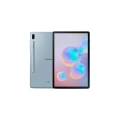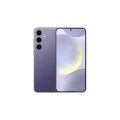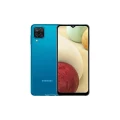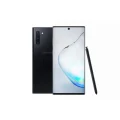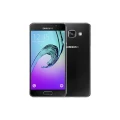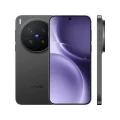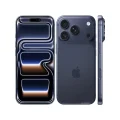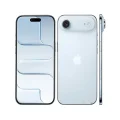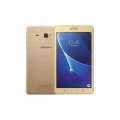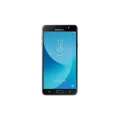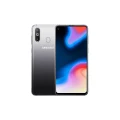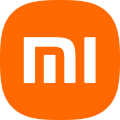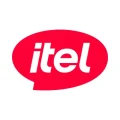- Home
- All Products
- Samsung
- Samsung Galaxy Z Fold5
Samsung Galaxy Z Fold5



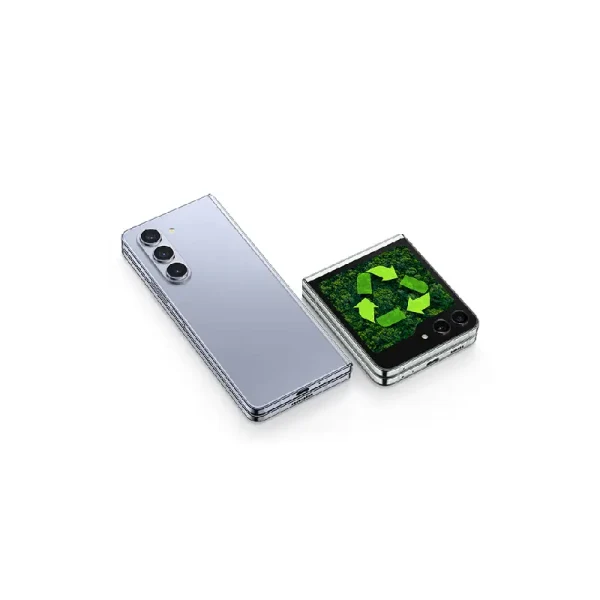

-
Battery: Li-Po 4400 mAh
-
RAM: 12GB, 12GB, 12GB
-
Storage: 256GB, 512GB, 1TB
-
Display: Foldable Dynamic AMOLED 2X, 7.6 inches
-
Camera: Rear 50 MP+10 MP+12 MP, and Front 4 MP+Cover camera: 10 MP
-
OS: Android 13, upgradable to Android 14, One UI 6
Full Specifications
Price
| Official | 279999 BDT 12GB/256GB Approx. |
| Unofficial | About 279999 BDT 12GB/256GB, 135000 BDT 12GB/512GB Approx. |
General
| Model | Samsung Galaxy Z Fold5 |
| Announced | 2023, July 26 |
| Released | 2023, August 11 |
| Status | Available |
Design
| Dimensions | Unfolded: 154.9 x 129.9 x 6.1 mm; Folded: 154.9 x 67.1 x 13.4 mm |
| Weight | 253 g (8.92 oz) |
| SIM SIM (Subscriber Identity Module) is a small card that contains mobile network subscriber's account information. This allows the phone using the card to attach to a mobile network. The SIM card is most commonly associated with GSM and UMTS mobile networks. Moving a SIM card from one phone to another allows a subscriber to switch mobile phones without having to contact their mobile network carrier. SIM cards can also be used by a phone to store limited amounts of data, such as phone numbers and text messages. |
Nano-SIM and eSIM or Dual SIM (2 Nano-SIMs and eSIM, dual stand-by) IPX8 water resistant (up to 1.5m for 30 min) Armor aluminum frame with tougher drop and scratch resistance (advertised) Stylus support |
| Colors |
Icy Blue, Phantom Black, Cream, Gray, Blue |
Display Specification
| Display Type Display Technology => A number of display technologies and types used in mobile phones => TFT (Thin Film Transistor), IPS (In-Place Switching), OLED (Organic Light Emitting Diode), AMOLED (Active-Matrix Organic Light-Emitting Diode), Super AMOLED (an even advanced version of AMOLED), Resistive Touchscreen (Resistive touchscreens contain two layer of conductive material with a very small gap between them which acts as a resistance), Capacitive Touchsceen (Capacitive touchscreen technology consists of a layer of glass coated with a transparent conductor) | Foldable Dynamic AMOLED 2X |
| Size | 7.6 inches, 183.2 cm2 |
| Resolution | 1812 x 2176 pixels |
| Refresh Rate | 120Hz |
| Pixel Density Pixel Density (PPI) is refers to the concentration of pixels on a particular display, measured in pixels per inch (ppi). Pixel density is calculated by dividing the diagonal pixel resolution of a display by its diagonal size, higher pixel density better display quality. | 373 ppi density |
| Features |
HDR10+ 91.1% screen-to-body ratio Cover display: Dynamic AMOLED 2X, 120Hz, Corning Gorilla Glass Victus 2 6.2 inches, 904 x 2316 pixels, 23.1:9 ratio |
Platform
| Operating System OS => Every computer system run on a base software called Operating System (OS). Operating System controls all basic operations of the computer (such as smartphone, PDAs, tablet computers and other handheld devices). The Operating System allows the user to install and run third party applications (apps), apps are used to add new functionality to the device. | Android 13, upgradable to Android 14, One UI 6 |
| Chipset Chipset is a group of integrated circuits designed to perform one or a more dedicated functions, often with real time computing constraints, Popular smartphones are equipped with more advanced embedded chipsets that can do many different tasks depending on their programming. | Qualcomm SM8550-AC Snapdragon 8 Gen 2 (4 nm) |
| CPU CPU (Central Processing Unit) mostly known as processors, CPU processes instructions in order to carry out certain functions that make your device operate properly. Processors are often described as the brain of computers, smartphones and tablets, Smartphones and tablets rely on processors to carry out their every task, Processors are an incredibly important factor in selecting any type of computing device, including your smartphone. | Octa-core (1x3.36 GHz Cortex-X3 & 2x2.8 GHz Cortex-A715 & 2x2.8 GHz Cortex-A710 & 3x2.0 GHz Cortex-A510) |
| GPU GPU (Graphics Processing Unit) is a single-chip processor designed to rapidly manipulate and alter memory to accelerate the creation of images in a frame buffer intended for output to a display, This includes things such as lighting effects, object transformations, and 3D motion. | Adreno 740 |
Main Camera
| Camera Setup | Triple |
| Resolution |
50 MP, f/1.8, 23mm (wide), 1.0µm, dual pixel PDAF, OIS 10 MP, f/2.4, (telephoto), PDAF, OIS, 3x optical zoom 12 MP, f/2.2, 123˚, 12mm (ultrawide), 1.12µm |
| Features |
LED flash, HDR, panorama |
| Video | 8K@30fps, 4K@60fps, 1080p@60/240fps (gyro-EIS), 720p@960fps (gyro-EIS), HDR10+ |
Selfie Camera
| Camera Setup | Single |
| Resolution |
4 MP, f/1.8, 26mm (wide), 2.0µm, under display Cover camera: 10 MP, f/2.2, 24mm (wide), 1/3", 1.22µm |
| Video | 4K@30/60fps, 1080p@30/60fps, gyro-EIS |
| Features | HDR |
Network & Connectivity
| Technology | GSM / CDMA / HSPA / EVDO / LTE / 5G |
| Speed | HSPA, LTE (CA), 5G |
| Wi-fi Wi-Fi is a popular wireless networking technology using radio waves to provide high-speed network connections that allows devices to communicate without cords or cables, Wi-Fi is increasingly becoming the preferred mode of internet connectivity all over the world. | Wi-Fi 802.11 a/b/g/n/ac/6e, tri-band, Wi-Fi Direct |
| Bluetooth Bluetooth is a wireless communications technology for exchanging data between mobile phones, headsets, computers and other network devices over short distances without wires, Bluetooth technology was primarily designed to support simple wireless networking of personal consumer devices. | 5.3, A2DP, LE, aptX HD |
| NFC NFC (Near field communication) is a set of standards for smartphones and similar devices to establish peer-to-peer radio communications with each other by touching them together or bringing them into proximity, usually no more than a few inches. | Yes |
| Positioning |
GPS, GLONASS, GALILEO, BDS |
| FM Radio | No |
| USB | USB Type-C 3.2, OTG |
| 2G Network |
GSM 850 / 900 / 1800 / 1900 - SIM 1 & SIM 2 (dual-SIM model only) CDMA 800 / 1900 |
| 3G Network |
HSDPA 850 / 900 / 1700(AWS) / 1900 / 2100 CDMA2000 1xEV-DO |
| 4G Network |
1, 2, 3, 4, 5, 7, 8, 12, 13, 17, 18, 19, 20, 25, 26, 28, 38, 39, 40, 41, 66 - International 1, 2, 3, 4, 5, 7, 8, 12, 13, 18, 19, 20, 26, 28, 38, 39, 40, 41, 48, 66, 71 - USA 1, 2, 3, 4, 5, 7, 8, 12, 13, 18, 19, 20, 25, 29, 30, 38, 39, 40, 41, 46, 66, 71 - Canada |
| 5G Network |
1, 2, 3, 5, 7, 8, 12, 20, 25, 28, 38, 40, 41, 66, 77, 78 SA/NSA/Sub6 - International 2, 5, 48, 66, 77, 78, 257, 260, 261 SA/NSA/Sub6/mmWave - USA (Verizon) 2, 5, 38, 41, 66, 71, 78 SA/NSA/Sub6 - Canada |
Battery
| Battery Type Battery Type => Cell phones run on various kinds of batteries depending on the manufacturer, phone size or shape and features. There are basically four types of cell phone batteries => Lithium Polymer, Lithium Ion, Nickel Metal Hydride and Nickel Cadmium. | Li-Poly (Lithium Polymer) |
| Capacity Battery Capacity is a measure (typically in Amp-hr) of the charge stored by the battery, and is determined by the mass of active material contained in the battery. The battery capacity represents the maximum amount of energy that can be extracted from the battery under certain conditions. | 4400 mAh |
| Removable | No |
| Charging |
25W wired, 50% in 30 min (advertised) 15W wireless 4.5W reverse wireless |
| Wireless Charging Wireless Charging (Inductive Charging) uses an electromagnetic field to transfer energy between two objects. This is usually done with a charging station. Energy is sent through an inductive coupling to an electrical device, which can then use that energy to charge batteries or run the device. | Yes |
Multimedia
| Loudspeaker | Yes, with stereo speakers |
| Audio Jack | No |
| Audio Features |
32-bit/384kHz audio Tuned by AKG |
Storage
| Card Slot Memory Card Slot is a special slot for inserting a memory card. Memory cards allow you to expand the phone's built-in memory, A memory card (sometimes called a flash memory card or a storage card) is a small storage medium used to store data such as text, pictures, audio, and video, for use on small, portable or remote computing devices such as mobile phones, mp3 players, digital cameras. | No |
| Internal Storage Internal Storage is a data storage space (flash memory) mostly used in smartphones, tablets and other electronic devices where operating system, apps, music, photos, videos, files and other user data Is stored. |
256GB 12GB RAM, 512GB 12GB RAM, 1TB 12GB RAM UFS 4.0 |
Sensors
| Fingerprint | Yes (side-mounted) |
| Other Sensors | accelerometer, gyro, proximity, compass, barometer, Samsung DeX (desktop experience support), Ultra Wideband (UWB) support |
About the Samsung Galaxy Z Fold5:
The Samsung Galaxy Z Fold5, launched in July 2023, is Samsung’s most advanced foldable phone to date, blending smartphone portability with tablet-like productivity. It features a 7.6-inch Foldable Dynamic AMOLED 2X main display with a smooth 120Hz refresh rate, delivering immersive visuals for multitasking, gaming, and media. When folded, the 6.2-inch outer display allows for quick access to notifications, calls, and apps.
The Fold5 is powered by the flagship Qualcomm Snapdragon 8 Gen 2 for Galaxy processor, ensuring top-tier performance across all tasks. It boasts a triple rear camera setup, including a 50MP main sensor, and supports S Pen input on the main screen, enhancing productivity. With up to 1TB of storage, an improved hinge design, and lighter, slimmer form factor, the Fold5 offers a premium experience. It runs Android 13 with One UI 5.1.1, has IPX8 water resistance, and a 4400mAh battery with 25W fast charging.
Main Key Features:
- Launch Date: July 2023
- Main Display: 7.6″ Foldable Dynamic AMOLED 2X, 2176 x 1812, 120Hz
- Cover Display: 6.2″ AMOLED, HD+, 120Hz
- Chipset: Snapdragon 8 Gen 2 for Galaxy (4nm)
- RAM & Storage: 12GB RAM; 256GB, 512GB, or 1TB storage (no microSD)
- Cameras: Rear – 50MP (main) + 12MP (ultrawide) + 10MP (telephoto, 3x zoom), Front – 10MP (cover), 4MP (under-display)
- Stylus: Supports S Pen (Fold edition only, sold separately)
- Battery: 4400mAh with 25W fast charging, 15W wireless, 4.5W reverse
- Durability: IPX8 water resistance, improved hinge design
- Security: Side-mounted fingerprint sensor
- Software: Android 13, upgradable, One UI 5.1.1
- Colors: Icy Blue, Phantom Black, Cream (exclusive colors online)
Pros & Cons:
Pros:
- Stunning foldable AMOLED display with smooth 120Hz refresh
- Flagship Snapdragon 8 Gen 2 performance
- Great camera system with optical zoom
- Supports S Pen for productivity
- Lighter and thinner than previous Fold models
- IPX8 water resistance for added durability
Cons:
- Very expensive compared to regular smartphones
- No dust resistance rating
- Crease still visible on the foldable screen
- No built-in S Pen slot
Opinions:
The Samsung Galaxy Z Fold5 is a flagship foldable device that brings innovation, power, and versatility to the smartphone market. Its expansive foldable display, coupled with its powerful hardware and camera system, makes it ideal for users who demand both performance and style. The addition of stylus support and the durability of the Armor Aluminum frame further enhance its appeal, especially for professionals and tech enthusiasts.
Check other Models of Samsung:
FAQs about Samsung Galaxy Z Fold5
Q: What kind of camera setup does the Z Fold5 feature?
A: It boasts a triple camera system with a 50MP main camera, a 10MP telephoto lens with 3x optical zoom, and a 12MP ultrawide camera for versatile photography.
Q: What is the weight and thickness of the Galaxy Z Fold5?
A: The Z Fold5 weighs 253g and has a thickness of 6.1mm when unfolded, making it sleek and portable.
Q: How durable is the Z Fold5?
A: It has an IPX8 water resistance rating and an armor aluminum frame, designed to withstand splashes and drops.
Q: Does the Z Fold5 support multi-window functionality?
A: Yes, it supports Samsung DeX and allows users to multitask with multiple apps simultaneously on its expansive display.
Q: What battery capacity does the Z Fold5 have, and how fast can it charge?
A: It features a 4400mAh battery and supports 25W wired charging, capable of reaching 50% in about 30 minutes.
Give Your Review
Disclaimer Note
You can write your own disclaimer from APS Settings -> General -> Disclaimer Note.
